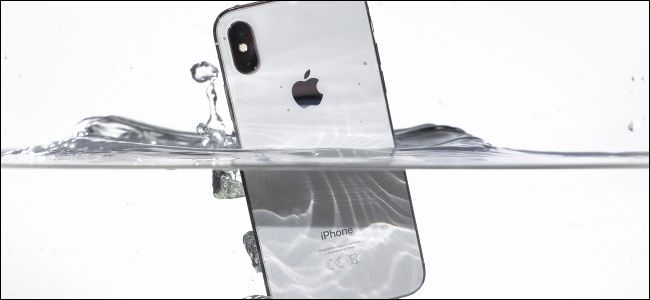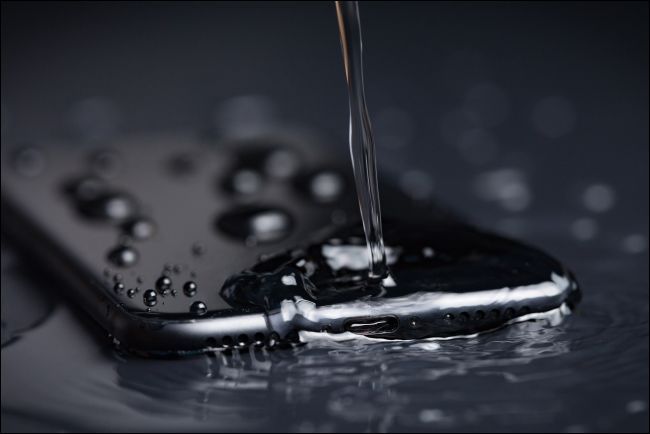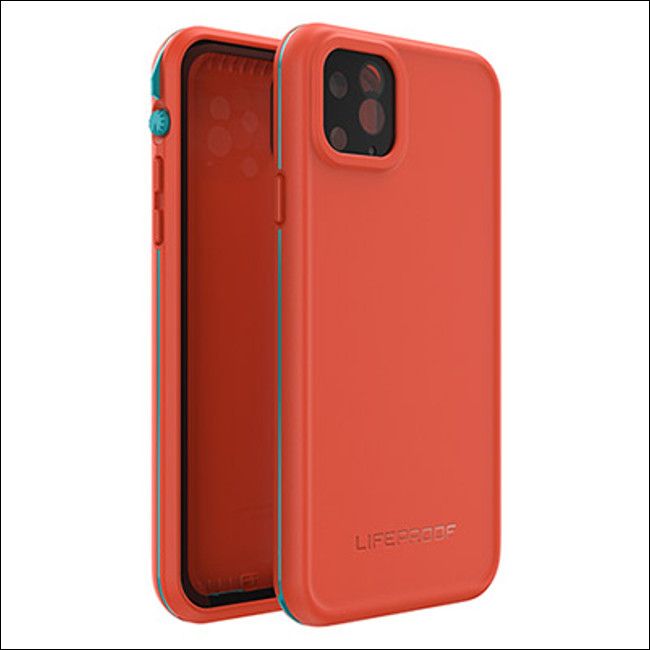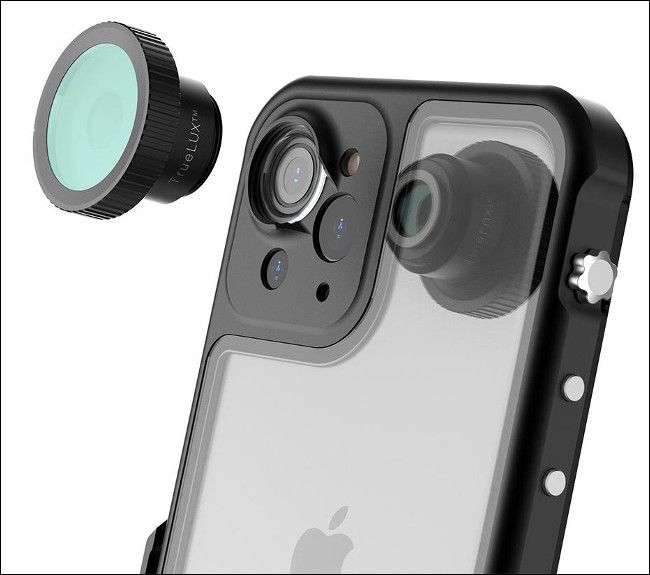Quick Links
Modern iPhones are water-resistant, but the strength of that protection varies from model to model. Having your device's battery or screen replaced might impact this protection, depending on who performed the repairs.It's also important to understand that "water-resistant" and "waterproof" are not the same thing. Here's what you need to know.
Which iPhones Are Water-Resistant?
The iPhone 11 Pro and 11 Pro Max each have an IP68 rating. According to Apple, these devices can withstand a depth of up to 4 meters for 30 minutes. This is the most "waterproof" phone Apple has ever manufactured.
The iPhone XS and XS Max come in a close second, with an IP68 rating. Apple claims these devices can withstand a depth of 2 meters for up to 30 minutes.
The iPhone 7, 8, X, and their respective Plus/Max models each achieved an IP67 rating for a depth of 1 meter up to 30 minutes.
The iPhone 6s lacks any kind of water or dust resistant rating, but demonstrated a high level of water resistance in consumer tests. It's possible Apple was testing the water-resistant technology that officially made it into the iPhone 7. Both revisions of the iPhone SE lack any water resistance.
Understanding Splash, Water, and Dust Resistance
Waterproof and water-resistant are not the same thing when it comes to consumer electronics. Many watches are water-resistant, but they can't handle much more than a splash of water. Most recent iPhone models are water-resistant, but there are conditions attached to that rating, like depth and duration of exposure.
Apple has no way to test the water-resistance of every iPhone that comes out of the factory. At the same time, there are reports in the media of phones surviving exposure that goes well beyond the IP6X rating they were assigned in testing.
You'll also find tales that don't paint such a rosy picture, including brand new iPhones that failed instantly after only a brief dunking. Don't trust the IP rating blindly; your iPhone isn't guaranteed to be waterproof despite Apple's best efforts.
Every new iPhone since the iPhone 7 has shipped with some form of water and dust resistance backed up by testing performed in a laboratory. With the arrival of the iPhone 11 family, this water resistance has improved further still. This protection is defined by an IP (Ingress Protection) rating of IP67 or IP68.
The first number determines how effective the device is at deterring solids like dust and sand. In this instance 6 is the highest rating, which means that all iPhone models since the iPhone 7 are completely dust-tight. You shouldn't have any issues with dust or small particles entering the display assembly or chassis.
The second number (7 or 8) determines how effective the device is at preventing liquids from entering. The IP67 rating guarantees a device can be submerged for a depth of 1 meter for up to 30 minutes and remain functional. An IP68 rating means the device can withstand depths of beyond 1 meter, though the test duration and precise depth are left up to the manufacturer.
Water Damage Isn't Covered by Warranty
Despite the IP67 and IP68 ratings, your iPhone warranty doesn't cover water damage. That means if your iPhone develops a fault as a result of liquid damage, Apple won't honor their limited one-year warranty.
If you have an AppleCare+ policy with accidental damage coverage, you should be able to pay a fixed fee to have your device replaced regardless of what caused the damage.
The presence of liquid contact indicators (LCIs) will reveal whether or not your iPhone has come into contact with potentially device-damaging liquid. You can see these indicators inside the SIM tray of any iPhone 5 or later, and in the headphone and charging ports of earlier iPhone and iPod models.
As a result of this, Apple recommends you avoid the following activities:
- Swimming, bathing, or using your iPhone in a sauna or steam room
- Exposing the device to pressurized or high-velocity water (e.g. showering, surfing)
- Cleaning the device with pressurized air
- Intentionally submerging the device for any reason
- Damaging or disassembling the device
- Using the iPhone outside of the suggested temperature or humidity ranges
In other words, Apple explicitly recommends against dunking your iPhone underwater. iPhone water resistance seems to be a last line of defense. While the iPhone has been tested to withstand an IP67 or IP68 water rating, it's not worth intentionally getting your iPhone wet. Other factors can also affect the water-resistance.
Is My iPhone Still Water Resistant After Repairs?
Apple-approved service shouldn't affect your iPhone's water resistance, but third-party repairs could result in your iPhone not being waterproof afterward. On the iFixit forum, Experimac's Justin Berman notes that the water-resistant rating is tied closely to the presence of adhesive strips located on the display assembly.
When the device is opened up, the water-resistant seal is broken, and the strips will need to be replaced to maintain water resistance. If you have your battery or display replaced by Apple, you should be fine. Repairs are always more expensive when undertaken by Apple, but you generally get what you pay for in the form of first-party replacement parts and qualified technicians.
Where things get tricky is when you take your device to a third-party technician without an Apple accreditation. These businesses are in shopping malls and on main streets all over the world, and they generally offer competitive prices for common smartphone casualties, like broken screens and failing batteries.
If you do decide to take your iPhone to one of these retailers, be sure to ask whether the adhesive strips on the display assembly were properly replaced. You're going to have to take the technician at their word. The only way to find out for sure is to risk your phone becoming water-damaged. Wherever possible, take it to an Apple Store or Apple-approved technician.
What Else Can Affect iPhone Water Resistance?
Damage to your iPhone can affect its water resistance. If your phone takes a hard knock, you might damage the adhesive seal that keeps water and dust out. This is more likely to happen if you don't use a case. Any kind of physical dent or damage that might cause movement of the components inside the iPhone increases the chances of damage.
Cleaning your phone with pressurized air might also jeopardize the seal. Apple has always recommended against cleaning the iPhone with such products. Instead, you should use cotton swabs, a soft cloth, and plenty of elbow grease. You can clean out the charging port if your iPhone isn't charging properly, but don't expose it to liquids in order to do so.
Lastly, plain old bad luck can also affect how waterproof your iPhone is. Apple doesn't support warranty claims against water damage for a reason. Even the latest and greatest iPhone models can come straight from the factory with defects, and waterproofing is no exception.
Even if you have AppleCare+, you will still have to pay the flat fee to have your IP68-rated iPhone 11 replaced if it becomes water damaged.
Want a "Water-Proof" iPhone? Use a Case
The water resistance built into every iPhone model is not to be relied on for any serious water exposure. If there's a high chance your iPhone will get wet, then you might want to invest in a waterproof case.
Plenty of companies specialize in creating waterproof cases. It's a good idea to go with a brand that you trust since you're going to be placing a lot of faith in them to keep your device safe. At the time of writing, cases for the new iPhone 11 are still emerging.
Remember:Â If these cases fail, the companies responsible will not replace your device. You're still taking a chance when you use these products, so be aware of the risks.
Catalyst create iPhone cases that are waterproof to 10 meters (33ft) with an IP68 water rating. For around $90, you can protect your device when diving, snorkeling, or hiking in inclement weather. You also get "military grade" shock protection for drops up to 2 meters (6.6ft) thanks to the polycarbonate shell.
LifeProof is another respected brand in the rugged case market. The LifeProof FRE series lets you take your iPhone to depths of up to 2 meters (6.6ft) for an hour, with drop protection of 2 meters (6.6ft).
The Hitcase PRO is a snap-on waterproof and shock-proof case for swimming, diving, and generally protecting your device from the perils of an active lifestyle. In addition to 10 meters (33ft) of waterproofing and 5 meters (16ft) of drop protection, you can attach proprietary lenses to your Hitcase for improved mobile photography.
Water and iPhones Still Don't Mix
Despite the progress Apple has made in safeguarding the iPhone from water damage, we still can't recommend you dunk your iPhone underwater. Apple also advises against this, which is reflected in the company's customer advice and warranty terms.
For now, we'd recommend using common sense, putting your iPhone in a protective case, and investing in a fully waterproof housing if you're going to be shooting selfies on a log flume any time soon.





